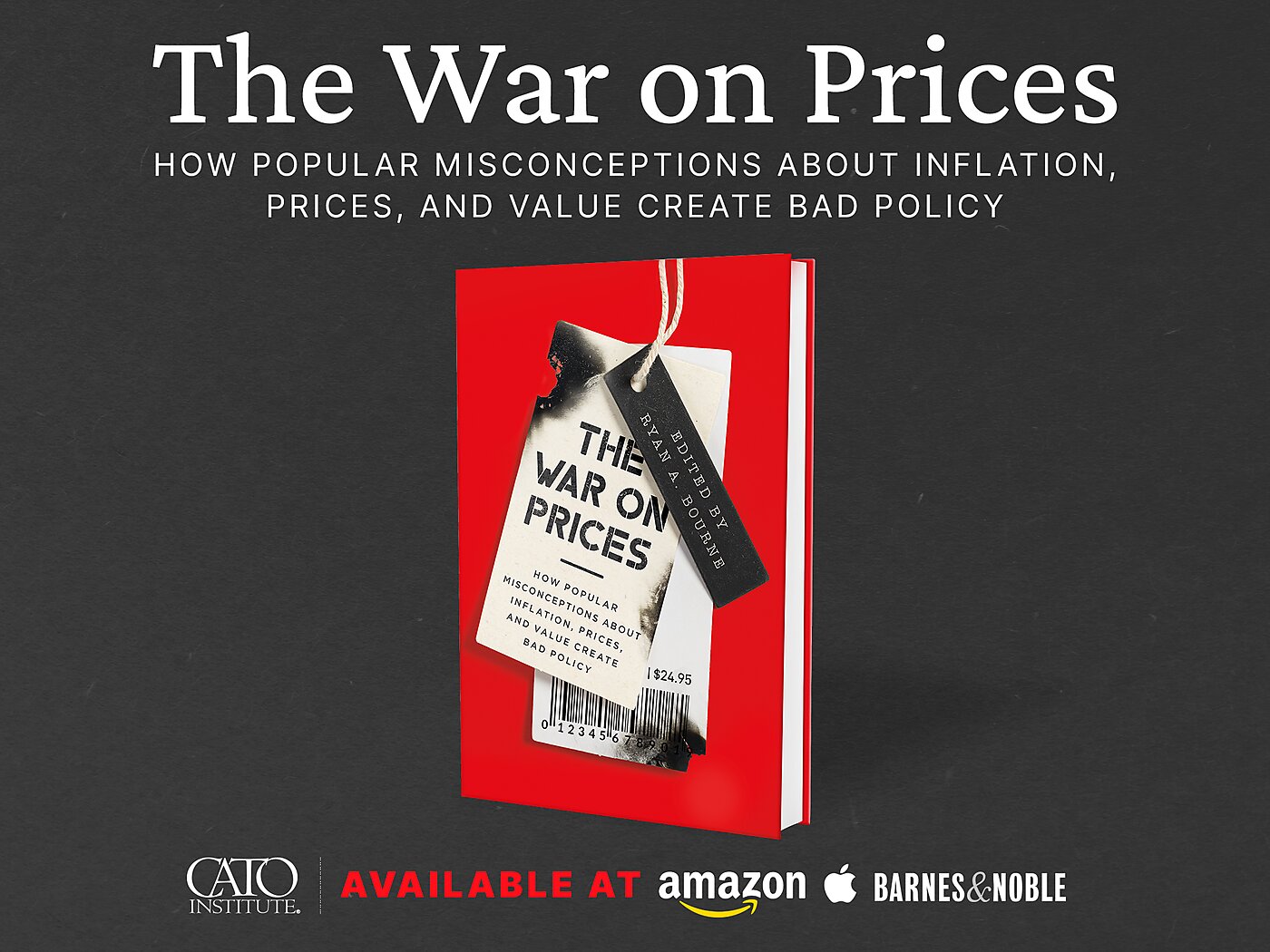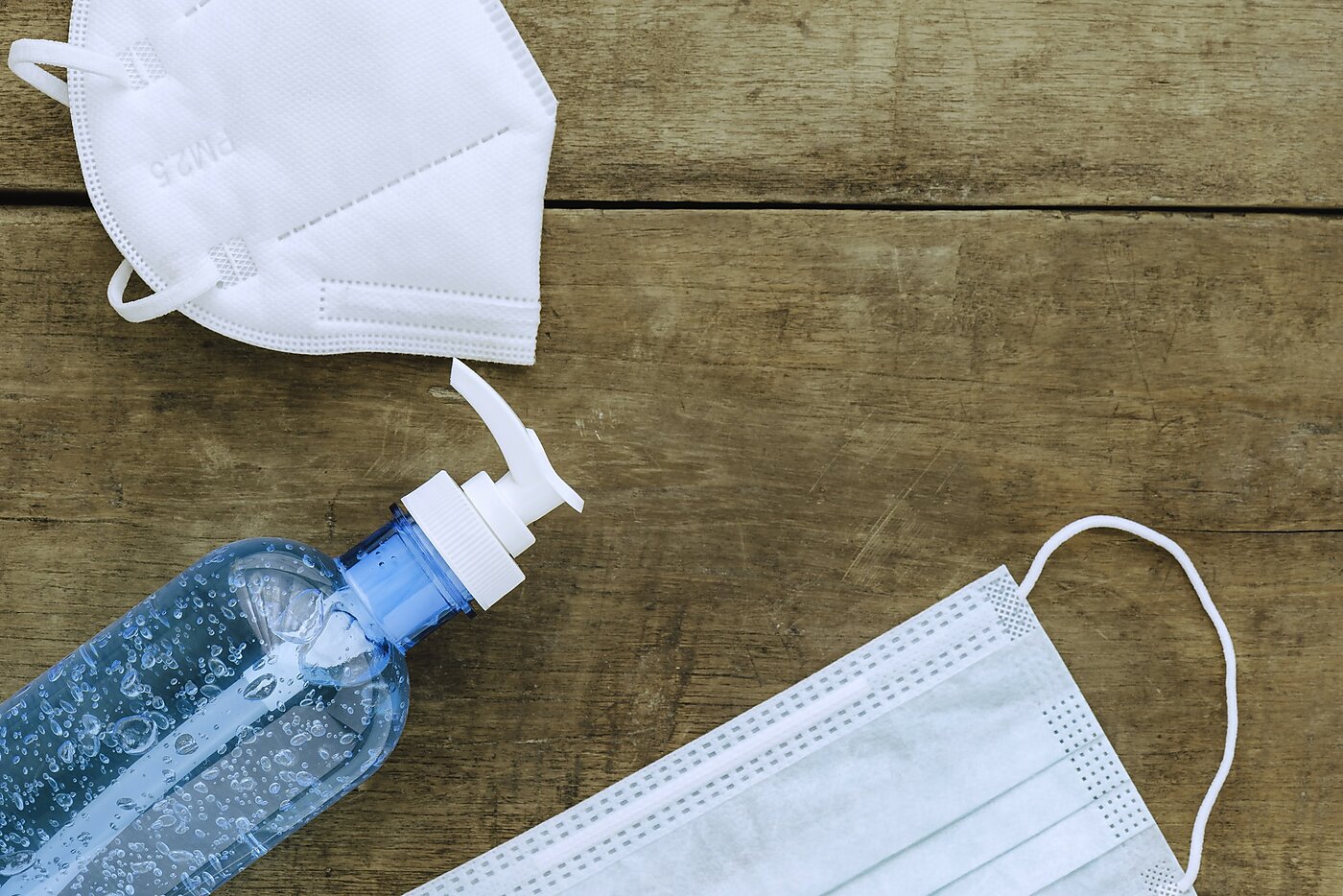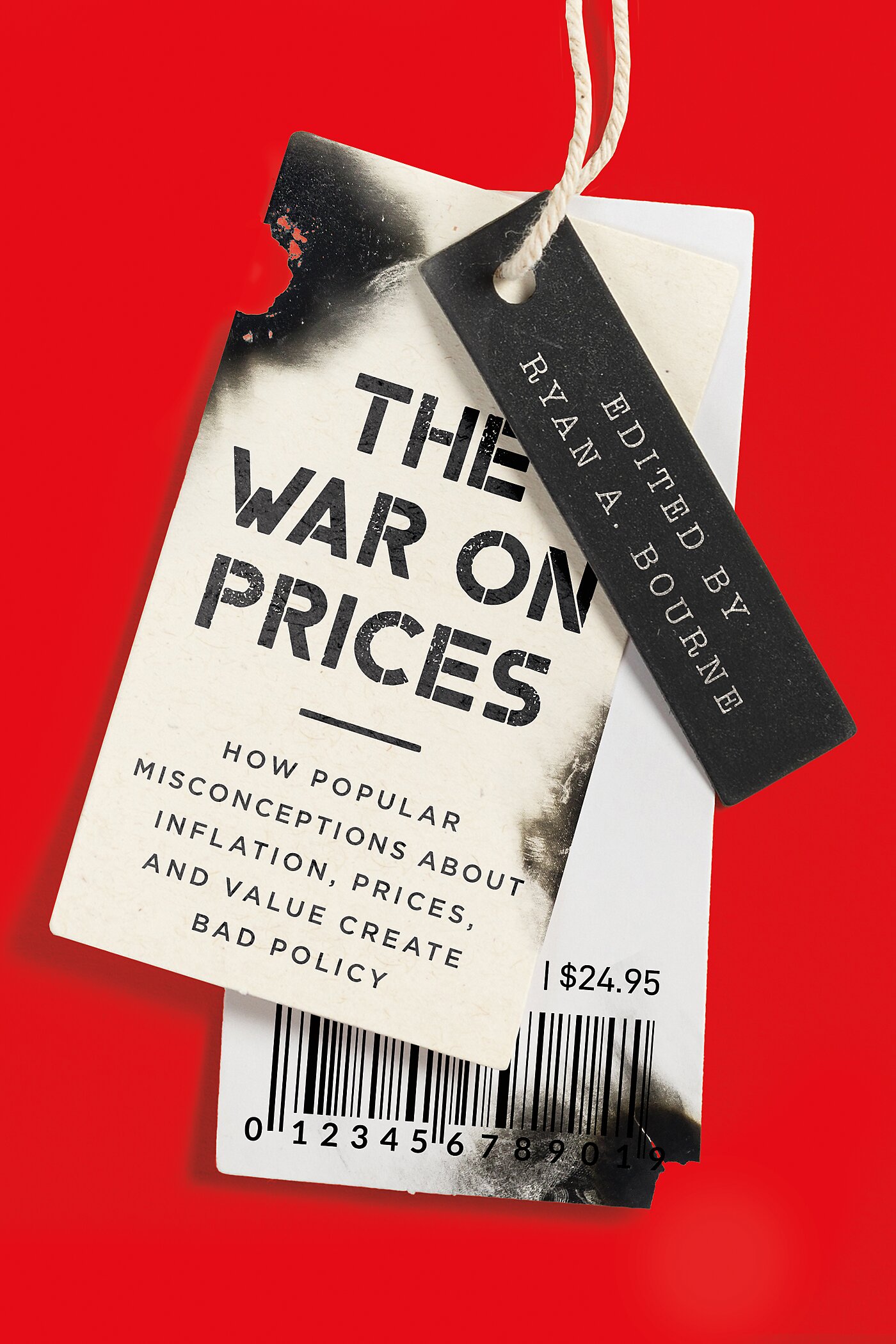Note: This is an excerpt from my book The War on Prices, made all the more relevant by Kamala Harris’s promise to introduce a federal anti-price-gouging law on groceries should she win the election.
Hurricane Harvey hit the Texas coast near Port Aransas on August 25, 2017. It was the second-costliest hurricane on record, resulting in over 100 deaths and $125 billion worth of damage to hundreds of thousands of buildings and cars.
Days later, Texas Attorney General Ken Paxton told CNBC that his office had received 500 complaints about “price gouging”—instances of sellers charging prices for goods and services at levels so high they are deemed neither reasonable nor fair. Some businesses charged $99 for a case of water; hotels had tripled or quadrupled their rates; and gas prices had soared from $4 to $10 a gallon. “These are things you can’t do in Texas,” Paxton said, reminding viewers of the state’s emergency law against what many deemed “greedy profiteering.”
Disasters completely disrupt the supply-and-demand patterns for goods and services. Hundreds of southeast Texas communities had no safe drinking water, which sent the demand for bottled water soaring. Damaged homes led to a surge in hotel bookings and the need for more tools and building materials. Impassable roads and bridges hampered the delivery of groceries and other retail products, while the total shutdown of oil refineries directly limited fuel production.
Prices thus become highly volatile after natural disasters. Consumers, however, resent paying more for essential goods, particularly when they have been triggered by soaring demand (as with bottled water), as opposed to businesses’ costs rising because of the disaster. As a result, 37 states and Washington, DC, have anti-price-gouging laws (APGLs) that use government power to prevent or limit large price increases during emergencies.
Texas’s APGL kicks in when a disaster is declared by the governor or the country’s president. Under the law, merchants are not allowed to sell or lease fuel, food, medicine, lodging, building materials, construction tools, or other necessities at “exorbitant” or “excessive” prices, with those caught facing civil penalties of up to $10,000 per violation, rising to $250,000 if elderly consumers are affected.
APGLs like this are often extremely popular. After Hurricane Harvey, 67 percent of polled Americans thought there should be a federal APGL, with just 3 percent saying no such laws should exist at any government level.
Concerns about price gouging during the COVID-19 pandemic and the recent inflation crisis encouraged federal legislative proposals in Congress. Sen. Elizabeth Warren’s Price Gouging Prevention Act of 2022 would, for example, have made it unlawful “to sell or offer for sale a good or service at an unconscionably excessive price” during “exceptional market shocks” like natural disasters, power outages, strikes, civil disorder, war, or public health emergencies. The proposed fines were huge, at 5 percent of parent company revenue for very large and important companies. Firms would only be able to avoid them if they could demonstrate price increases were a direct result of rising costs outside their control.
The Basic Economics of APGLs
In a free-market economy, prices serve as a vital mechanism to balance supply and demand, with price movements signaling changes in underlying market conditions. Consider a hurricane that significantly increases the demand for bottled water, due to disruptions to public water supplies and electricity outages. This shock creates a relative scarcity of water at the old price, leading to a situation where the quantity demanded exceeds the quantity supplied.
In response to this unmet demand of more dollars chasing dwindling stocks, the price of bottled water begins to rise. This rising price sends a loud message of a relative scarcity in the market—of supply not satisfying now-higher demand—at the old price. Yet that price increase brings useful incentives for suppliers and consumers to adjust their behavior to avoid these shortages.
First, the higher price acts as a financial rationing device. Consumers, facing an increased cost of purchasing, reassess their needs, prioritizing buying only what is necessary, rather than what is nice to have. This behavior helps ensure that those who value water the most at that time—and are willing to pay higher prices—can still obtain it.
Second, the rising price compensates suppliers and merchants for bringing more bottled water to market. The higher price justifies the costs and risks associated with opening stores in damaged areas, transporting bottled water from surrounding states, paying overtime to workers and truckers, or ramping up production or transportation through acquiring new inputs and storage space.
The higher price thus increases the quantity supplied to meet the higher demand, which means that more water is sold, albeit at higher prices, than before the hurricane. In fact, the potential for prices to rise in areas where hurricanes could hit grants retailers the incentive to invest in option-ready supply or contingency arrangements for that eventuality in the future.
Yes, we’d obviously see some charity and relief efforts to ship in water from other states when disaster strikes, even if prices were capped. As Nobel Prize-winning economist Richard Thaler and others have observed, big drugstore chains and big-box retailers face large reputational risks from being seen to raise prices significantly in emergencies. To protect perceptions about their brand, and so longer-term profits, they often decide not to hike prices significantly anyway, accepting some shortages or non–price rationing in their stores, or else bear the cost of developing systems to transport supply from nonaffected areas.
Yet with price increases, other small sellers, independent stores, and newer individual suppliers, without major brands to worry about, face stronger incentives to open stores, and release stocks of bottled water, transport it from elsewhere, or reorient their production facilities to increase the supply. Their efforts help mitigate the immediate shortage.
A binding anti-price-gouging law alters this dynamic. True, these APGLs vary significantly across states, typically applying to cleanup products, medical supplies, home heating oil, housing, transportation, storage, and motor fuels once emergencies are triggered. Some laws are prescriptive, with California’s limiting price increases to less than 10 percent above their pre-crisis level, unless the business can validate that it now faces higher costs. Other laws are more opaque: Virginia bans “unconscionable prices” for covered goods, loosely defined as a price “grossly” exceeding that charged for the same or similar goods in the 10 days before the emergency.
All these laws, however, can act like price ceilings when they bind—and distort prices in a way that sends out the wrong signals about the relative scarcity of products. In California’s case, that price control is explicit when demand really surges, so the law holds prices below market rates. For most other states, the laws create uncertainty. Vague definitions like “unconscionable” or “excessive” create an unwillingness to raise prices because of the lack of clarity about the legality of any such action or requirements to prove that cost increases—which are often broader than specific product costs, such as for labor and transportation—are driving those pricing decisions.
In short, we’d expect APGLs to worsen shortages by disincentivizing the closure of the gap between the quantity demanded and the quantity supplied. With prices capped below market rates, consumers wouldn’t feel the same urgency to conserve bottled water and would overbuy to be on the safe side, quickly depleting stocks. From a seller’s perspective, fewer merchants would find it profitable to bring goods to market, including from out of state, while those holding stocks in cupboards or warehouses would be more likely to hoard supply in the hope of selling in the higher-priced black market. This situation would leave some customers unable to find water at any price.
Such a law might discourage businesses from making necessary contingency investments, increasing market susceptibility to future demand shocks too. High-profile advocates, such as the economist Isabella Weber, implicitly admit this, arguing that APGLs must be supplemented by “buffer stock systems” and “monitoring capacity” to be effective. This acknowledges that APGLs cause shortages. Such planning schemes essentially attempt to mimic market outcomes for these goods through corrective government action.
APGLs during COVID-19
After COVID-19 struck, the national state of emergency saw many state APGLs triggered, covering personal protective equipment, hand sanitizer, and various drugs and medicines. These laws proved more damaging during a pandemic. Unlike natural disasters that affect specific regions for a short time, COVID-19 was a long-lasting crisis across the entire country. There was no “outside” area from which major stores could bring in extra supplies, and the elevated demand for, say, hand sanitizer and facemasks endured much longer given the protracted nature of the pandemic.
So APGLs prolonged shortages. Hand sanitizer shelves at major chains such as CVS were barren right through May 2020. CEOs helping access facemasks from abroad said business worry about accusations of price gouging prevented their importation. Economists Rik Chakraborti and Gavin Roberts found that states imposing APGLs saw “significant increases in online searches for hand sanitizer,” implying people were having to search more aggressively to find it.
This problem was worse in states that had APGLs before the COVID-19 pandemic, implying that people’s experience with APGLs led to expectations of shortages, which in turn led to more hoarding and panic buying early on. Interestingly, APGLs might have even worsened the virus’s spread in March and April 2020. Those economists’ later research found that states with APGLs saw more people visiting stores (perhaps having to search more extensively for out-of-stock items), alongside higher COVID-19 case rates and deaths.
Of course, not all sellers would have raised prices aggressively, even absent these laws. Economists Luis Cabral and Lei Xu found that facemask prices on Amazon Marketplace rose 270 percent in March 2020 compared with 2019. But those who had sold them pre-pandemic only charged 63 percent of new sellers’ prices—indicating that it’s harder to hike prices as an established firm. Amazon itself was critical of price gouging, and stores such as CVS and Walmart appeared to react as they would with localized disasters through fear of the public reaction.
What APGLs did, however, was create new legal uncertainties for smaller convenience stores and online merchants willing to sell at higher market prices. That diminished the incentives for the economy to produce more of these goods that were in sustained high demand. It also deterred firms from making investments to build up capacity that could help during future pandemics.
The Economic Arguments for APGLs
Proponents of APGLs claim that large price increases during emergencies merely reflect companies’ exploitation of customers—a greed for profiteering from disasters. “People are outraged at ‘vultures’ who prey on the desperation of others and want them punished—not rewarded with windfall profits,” says philosopher Michael Sandel.
The laws of economics, however, don’t stop functioning just because a hurricane hits. Companies are disciplined when setting prices by customers’ willingness to pay and competitors’ ability to undercut them. The question is whether quasi–price controls lead to worse or better outcomes for allocating goods and ensuring people’s needs are met when disasters strike.
Two seductive economic objections are held up for APGLs. First, if prices rise too much, Pulitzer Prize-winning journalist Michael Hiltzik has written, then the poor suffer disproportionately. It is understandable, he says, that the public consider a first-come, first-served approach more reflective of need, in such situations, than a “most-money-best-served advantage.”
Why assume, though, that lines, rationing, or black markets help the poor? When shortages arise (as with COVID-19 tests in the spring of 2020), lots of nonprice forms of allocation occur instead that have extremely regressive effects. Merchants can sell to those who are well connected, at higher black-market prices, or give preference to their own family and friends. Richer people, who are less likely to have suffered catastrophic damage to vehicles or homes after hurricanes, given their greater resources, are better placed to pay people to go stand in line and buy up goods when available. The poor, whose lives may be less resilient to damage—meaning the lack of availability of goods to repair their home or to get their vehicle working has far graver consequences—may be willing to pay more to ensure quick access to goods for which APGLs create shortages.
A second, more sophisticated critique comes from economists Jeff Ely and Sandeep Baliga. They argue that after natural disasters, supply often cannot respond effectively and quickly to meet spikes in demand, so price increases are inevitable. In these extreme circumstances, when we are deciding how to allocate a fixed quantity of goods, policymakers should try to maximize “consumer surplus” and ignore “producer surplus.” The benefits to consumers from keeping prices low will exceed the efficiency gains of allocating goods to those who most value them.
But their assumption determines their conclusion. A high price really does affect marginal decisions to supply goods. The South Carolina attorney general’s office found that after Hurricanes Gustav and Ike, some “station owners reported that to avoid bad publicity they simply shut their doors instead of purchasing gasoline at elevated prices.” Small independent stores, when deciding whether to risk opening or transporting product in from out of state, are influenced by prices. In fact, free-market pricing affects supplier expectations about acting on an elevated willingness to pay when crises hit, encouraging them to store more product and mitigating shortages even before natural disasters strike.
The Morality of APGLs
Economists therefore generally object to APGLs. Asked whether they backed Senator Warren’s APGL proposal, just 3 percent of 40 top economists in the Initiative on Global Market’s survey agreed, whereas 84 percent disagreed. A 2012 poll over a proposed anti-price-gouging law in Connecticut saw the same result. That’s because economists see prices as reflective of supply and demand, rather than business whims. Firms are constrained in what they can charge by customers’ willingness to pay and by competition from other businesses at all times. Price movements provide crucial incentives to act on market realities.
The public clearly disagrees with economists, reacting with moral revulsion to large price hikes during emergencies, even when informed that experts believe APGLs deliver shortages and store closures. Philosopher Michael Sandel speaks for many in saying that “a society in which people exploit their neighbors for financial advantage in times of crisis is not a good society.” As economist Dwight R. Lee concludes, it’s as if we collectively demand a “magnanimous morality” of business during crises—an active sacrifice for the greater good, just as we hope someone jumps into a frozen lake to save a drowning child.
This sort of small group moral instinct is not invoked consistently, of course. During the spring of 2020, few accused traveling nurses earning $10,000 per week in New York, with free accommodation, car rentals, and covered travel, of “wage gouging.” Companies are treated differently.
More importantly, this instinct fails a consequentialist morality test. The disaster, and its effects on demand and supply, cannot be wished away. The question is how best to deal with it. Yes, donations of money, goods, or services, such as help providing water and tools, are welcome. But if such relief efforts were sufficient to overcome the destruction, firms wouldn’t even be able to raise prices significantly and we’d see no shortages, black markets, or rationing with APGLs.
That we do shows charity is insufficient. What’s more, only a freely operating price system, not relief agencies or charities, can coordinate action across large populations and sectors, including resolving tradeoffs over how much victims value the supply of, say, bottled water compared with plywood or medicines.
Some have argued that economists’ opposition to APGLs is overblown. Given the limited scope and duration of these laws, the often extensive carveouts if firms can prove that price increases are caused by cost increases, and the fact that major firms often avoid raising prices anyway, due to the reputational effects, some economists, such as Josh Hendrickson of the University of Mississippi, have argued that APGLs “aren’t so bad.”
But as the COVID-19 pandemic showed, they can still undermine our resilience and recovery from major shocks. And the sort of misguided economic thinking that gives rise to their adoption is even more troublesome.
Recent debates suggest much of the public considers it illegitimate for firms to raise prices significantly if they are being driven by demand increases, for example. Companies were blamed for high inflation, despite the role of excessive stimulus driving demand. There has even been some pushback against dynamic pricing as it has been rolled out beyond ridesharing companies to bowling alleys and other entertainment centers (see Chapter 24). If such impulses, which underpin APGLs too, become law in “normal times,” these sorts of price regulations could do much more damage.




